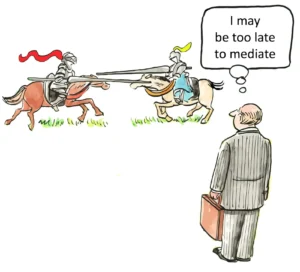Medical Error Lawsuit Claims: A Comprehensive Guide to Constitutional Rights and Legal Protections in Healthcare Litigation
Patients who have suffered harm from medical treatment frequently ask, “What constitutes a valid medical error lawsuit claim, and how can I protect my constitutional rights during the legal process?” Medical error lawsuit claims represent formal legal actions alleging that healthcare providers deviated from accepted medical standards, resulting in patient injury or death. Unlike simple medical dissatisfaction, these claims require proving specific legal elements including duty, breach of standard care, causation, and damages through rigorous evidentiary standards that protect both patient rights and medical professional integrity.
Medical malpractice litigation serves as a critical mechanism for ensuring accountability in healthcare while maintaining constitutional protections for all parties involved. The American legal system recognizes that while medical professionals deserve protection from frivolous claims, patients have fundamental rights to seek redress when genuine negligence causes harm. This balance reflects core constitutional principles of due process, equal protection, and access to justice that form the foundation of medical liability law.
What Constitutional Protections Apply to Medical Error Lawsuit Claims?
Constitutional due process protections ensure that both patients and healthcare providers receive fair treatment during medical malpractice proceedings. The Fifth and Fourteenth Amendments guarantee that no person shall be deprived of life, liberty, or property without due process of law, creating fundamental safeguards that govern how medical error claims are investigated, prosecuted, and adjudicated.
The Due Process Clause establishes procedural requirements that medical malpractice courts must follow, including adequate notice of allegations, opportunities for defendants to respond, and fair hearings with proper evidentiary standards. These constitutional protections prevent arbitrary government action while ensuring that legitimate claims receive thorough consideration through established legal processes.
Equal protection principles prevent discriminatory treatment of either patients or healthcare providers based on protected characteristics such as race, gender, religion, or socioeconomic status. Courts must apply consistent legal standards when evaluating medical error claims, ensuring that justice depends on factual evidence and legal merit rather than irrelevant personal characteristics.
The constitutional framework also protects healthcare providers’ property rights in their professional licenses and reputations, requiring clear and convincing evidence before imposing professional sanctions or license revocations. These protections maintain the integrity of medical practice while ensuring that disciplinary actions follow proper legal procedures.
How Do Legal Elements Define Valid Medical Error Claims?
Medical malpractice requires plaintiffs to prove four essential legal elements: duty, breach, causation, and damages. The existence of a doctor-patient relationship establishes the healthcare provider’s duty to provide competent care according to accepted medical standards. This duty applies whenever a professional relationship exists, whether in hospitals, clinics, or emergency situations.
Breach of duty occurs when healthcare providers deviate from the standard of care that reasonably competent professionals would provide under similar circumstances. This standard is typically established through expert medical testimony that explains what appropriate care should have involved and how the defendant’s actions fell short of professional requirements.
Causation represents the most challenging element in medical error claims, requiring proof that the healthcare provider’s breach directly caused the patient’s injury. Plaintiffs must demonstrate both factual causation (but-for causation) and legal causation (proximate cause), showing that the harm would not have occurred absent the medical error and that the consequences were foreseeable.
Damages must be quantifiable and significant, including medical expenses, lost wages, pain and suffering, and other measurable harms resulting from the medical error. Courts require clear evidence that the claimed damages flow directly from the healthcare provider’s negligence rather than from the underlying medical condition or other factors5.
What Are the Most Common Types of Medical Errors Leading to Lawsuits?
Diagnostic errors represent the leading cause of medical malpractice claims, accounting for a significant percentage of paid settlements and jury awards. These errors include misdiagnosis, delayed diagnosis, and failure to diagnose conditions that reasonable medical professionals would have identified under similar circumstances.
Missed diagnoses of serious conditions like cancer, heart disease, and infections create substantial liability exposure because early detection often dramatically improves patient outcomes. Emergency department diagnostic errors are particularly common, with time pressure and limited information contributing to mistakes that can have life-threatening consequences.
Surgical errors encompass a wide range of preventable mistakes including wrong-site surgery, retained surgical instruments, anesthesia complications, and post-operative infections. These errors often involve clear departures from established protocols and safety procedures that are designed to prevent such incidents.
Medication errors affect millions of patients annually and can result from prescribing mistakes, pharmacy errors, administration problems, or inadequate monitoring of drug interactions. Blood thinners represent approximately 7% of all medication errors in hospitalized patients, with potentially fatal consequences from dosing mistakes.
Birth injuries create emotionally charged litigation involving claims of obstetric negligence, fetal monitoring failures, and delivery complications that could have been prevented through appropriate medical intervention. These cases often involve substantial damages due to lifelong care requirements for injured children.
How Do State Laws Create Different Frameworks for Medical Error Claims?
State-specific statutes establish varying legal environments for medical malpractice litigation, with significant differences in statutes of limitations, damage caps, and procedural requirements. These variations reflect different policy priorities regarding patient protection, healthcare provider rights, and judicial efficiency.
Statutes of limitations typically range from two to four years for medical malpractice claims, with some states providing discovery rules that extend the filing period until patients reasonably should have discovered their injuries. These timing requirements create critical deadlines that can bar otherwise valid claims if not met promptly.
Damage caps exist in many states, limiting non-economic damages such as pain and suffering while generally allowing unlimited recovery for economic losses like medical expenses and lost wages. These caps reflect legislative attempts to balance patient compensation with healthcare affordability and provider availability.
Affidavit of merit requirements in numerous states mandate that plaintiffs obtain expert medical opinions supporting their claims before filing lawsuits. These requirements are designed to screen out frivolous claims while ensuring that legitimate cases proceed with adequate professional support.
Medical review panels in some states require pre-litigation screening of malpractice claims by panels of medical experts and attorneys. These panels evaluate case merits and issue findings that, while not binding, influence subsequent litigation strategies and settlement negotiations.
What Professional Standards Govern Medical Error Liability?
Standard of care represents the fundamental measure against which medical error claims are evaluated, requiring healthcare providers to exercise the same level of skill, care, and judgment that reasonably competent professionals would use under similar circumstances. This standard is typically established through expert testimony from qualified medical professionals.
The standard of care varies by medical specialty, geographic location, and available resources, recognizing that different practice environments may require different approaches to patient care. Rural physicians may not be held to the same standards as urban specialists when resource limitations affect available treatment options.
Professional licensing requirements establish minimum competency standards that healthcare providers must meet to practice legally. License violations may provide evidence of substandard care, though regulatory actions and civil malpractice claims involve different legal standards and procedures.
Continuing education requirements ensure that healthcare providers maintain current knowledge of medical advances, treatment protocols, and safety procedures. Failure to stay current with professional standards may contribute to medical error liability, particularly when outdated practices cause patient harm.
Hospital credentialing processes evaluate physician qualifications and monitor ongoing performance through peer review and quality assurance programs. These institutional oversight mechanisms help identify problematic practitioners while providing evidence of appropriate or inadequate supervision.
How Do Emerging Technologies Affect Medical Error Claims?
Artificial intelligence applications in healthcare create new categories of potential medical errors involving algorithmic failures, biased training data, and inadequate human oversight of automated diagnostic systems. While AI can improve diagnostic accuracy, errors in data inputs or flawed algorithms can lead to devastating misdiagnoses.
Physicians who rely on faulty AI systems may still bear responsibility for resulting patient harm, especially if they fail to exercise appropriate clinical judgment in reviewing automated recommendations. The legal framework for AI-related medical errors continues evolving as courts address questions of liability allocation between healthcare providers and technology manufacturers.
Telemedicine platforms have expanded rapidly, creating new opportunities for medical errors related to inadequate physical examinations, technical communication failures, and jurisdictional licensing issues. Limited physical assessments during virtual consultations increase risks of missed diagnoses, particularly for conditions requiring hands-on evaluation.
Platform reliability issues including poor video quality, dropped connections, and technical glitches can impair communication between patients and providers, leading to incomplete information sharing and potential medical errors. Healthcare providers must adapt their practices to ensure that telemedicine consultations meet appropriate standard-of-care requirements.
Electronic health records have improved information sharing but also created new error sources including data entry mistakes, system interoperability problems, and information overload that can obscure critical patient information. These technological challenges require careful implementation and ongoing monitoring to prevent medical errors.
What Evidence Requirements Must Be Met in Medical Error Claims?
Expert testimony represents the cornerstone of medical error litigation, with qualified medical professionals required to establish the applicable standard of care, demonstrate how defendants deviated from that standard, and explain the causal connection between the breach and patient harm. Expert qualifications must align with the medical specialty and practice area involved in the alleged error.
The burden of proof in medical malpractice cases typically requires clear and convincing evidence rather than the preponderance standard used in many civil cases. This heightened standard reflects the serious nature of professional negligence allegations and the potential consequences for healthcare providers’ careers and reputations.
Medical records provide essential documentation of the care provided, treatment decisions made, and patient responses to therapy. Complete and accurate medical records support both plaintiff and defense positions, while missing or altered records may create adverse inferences about the quality of care provided.
Contemporaneous documentation carries greater weight than records created after-the-fact, emphasizing the importance of thorough record-keeping during patient care. Healthcare providers who maintain detailed, timely records typically have stronger defenses against malpractice claims.
Witness testimony from treating physicians, nurses, and other healthcare team members can provide crucial insights into the care provided and the decision-making processes involved. These witnesses may support either plaintiff or defense theories depending on their observations and professional opinions.
How Do Defenses Work in Medical Error Litigation?
Assumption of risk defenses argue that patients voluntarily accepted known risks associated with medical procedures, limiting healthcare provider liability for adverse outcomes that fall within the accepted risk profile. This defense requires clear evidence that patients understood and consented to specific risks that materialized.
Informed consent documentation becomes crucial for assumption of risk defenses, requiring proof that patients received adequate information about treatment alternatives, potential complications, and expected outcomes. Healthcare providers must demonstrate that patients made informed decisions based on complete information.
Comparative negligence principles may reduce damages when patients contributed to their own harm through non-compliance with treatment recommendations, failure to follow post-operative instructions, or concealment of relevant medical history. These defenses require showing that patient actions materially contributed to the adverse outcome.
Statute of limitations defenses can bar claims filed after applicable deadlines expire, though discovery rules may extend filing periods until patients reasonably should have discovered their injuries. Healthcare providers must carefully track limitation periods while maintaining appropriate documentation.
Alternative causation defenses argue that patient injuries resulted from underlying medical conditions, natural disease progression, or other factors unrelated to the healthcare provider’s actions. These defenses require compelling medical evidence showing that adverse outcomes would have occurred regardless of treatment quality.
What Geographic Variations Affect Medical Error Claims?
Regional legal cultures significantly influence medical error litigation outcomes through varying judicial attitudes toward healthcare providers, damage awards, and procedural requirements. Some jurisdictions maintain more plaintiff-friendly environments, while others favor healthcare providers through legal and cultural factors.
State damage caps create different maximum recovery amounts for non-economic damages, ranging from $250,000 in some states to no limits in others. These variations dramatically affect potential case values and litigation strategies, requiring careful jurisdictional analysis for cases involving multiple state connections.
Urban versus rural practice environments create different liability exposures due to resource availability, specialist access, and community expectations. Rural physicians may face different standard-of-care requirements that account for limited resources and specialist availability.
Interstate licensing issues affect telemedicine liability when healthcare providers treat patients across state lines. These jurisdictional complications require careful analysis of applicable laws and licensing requirements to determine proper venues for medical error claims.
Local jury attitudes toward healthcare providers, damage awards, and medical malpractice claims vary significantly across regions, affecting both settlement values and trial strategies. Understanding local legal culture becomes essential for effective representation in medical error litigation.
What Role Does Professional Legal Representation Play?
Specialized attorneys with medical malpractice expertise provide essential services including case evaluation, expert witness coordination, and strategic litigation management. The complexity of medical error claims requires attorneys who understand both legal requirements and medical concepts involved in alleged negligence.
Attorney selection significantly impacts case outcomes, with experienced medical malpractice lawyers better positioned to evaluate case merits, develop effective strategies, and negotiate favorable settlements. Specialization in medical malpractice law provides advantages over general practice attorneys due to the technical knowledge required.
Contingency fee arrangements make professional representation accessible to injured patients regardless of their financial circumstances, with attorneys accepting cases based on merit rather than clients’ ability to pay hourly fees. These arrangements align attorney and client interests while providing access to skilled advocacy.
Case preparation requires substantial resources including expert witnesses, medical record analysis, and comprehensive discovery that can cost hundreds of thousands of dollars in complex cases. Professional legal representation ensures that cases receive adequate preparation while managing litigation costs effectively.
Settlement negotiations benefit from experienced legal counsel who understand case valuations, insurance company practices, and effective negotiation strategies. Skilled attorneys can often achieve better settlements than pro se plaintiffs while avoiding the costs and risks of trial.
How Do Insurance and Risk Management Factors Affect Claims?
Medical malpractice insurance provides financial protection for healthcare providers while establishing claims management procedures that affect litigation outcomes. Insurance companies typically control defense strategies and settlement decisions, creating potential conflicts between insurer interests and provider preferences.
Policy limits affect maximum recovery amounts available through insurance coverage, requiring careful analysis of coverage adequacy and potential personal liability exposure. Healthcare providers may face personal financial responsibility for judgments that exceed policy limits.
Risk management programs implemented by healthcare institutions help identify potential liability exposures while developing protocols to prevent medical errors. These programs may include incident reporting systems, peer review processes, and continuing education requirements that support quality improvement.
Claims-made versus occurrence-based insurance policies create different coverage requirements and timing considerations that affect both premium costs and coverage availability. Healthcare providers must carefully evaluate policy types while maintaining continuous coverage to avoid gaps.
Defensive medicine practices may increase healthcare costs while potentially reducing malpractice liability exposure through additional testing, specialist consultations, and conservative treatment approaches. These practices reflect provider concerns about litigation risk but may not always serve patient interests.
What Are Current Trends in Medical Error Litigation?
Technology-related errors have become increasingly prominent as healthcare systems adopt electronic health records, artificial intelligence diagnostic tools, and telemedicine platforms. These technological advances create new error sources while potentially improving care quality when properly implemented.
Diagnostic errors continue representing the largest category of medical malpractice claims, with emergency department cases showing particularly high risk due to time pressures and limited information availability. Research indicates that 40% of diagnostic error claims result in indemnity payments, demonstrating the serious nature of these allegations.
Regulatory changes at federal and state levels continue affecting medical error litigation through modified disclosure requirements, patient safety initiatives, and liability protection programs. These changes reflect ongoing efforts to balance patient protection with healthcare provider support.
Telemedicine liability issues have expanded rapidly following COVID-19 pandemic adoption of virtual care platforms. Legal frameworks continue evolving to address unique challenges posed by remote consultations, technical communication failures, and interstate licensing complications.
Patient safety initiatives emphasize error prevention through systematic quality improvement programs, enhanced communication protocols, and structured handoff procedures. These initiatives may reduce medical errors while providing evidence of institutional commitment to patient safety.
How Do Damages and Compensation Work in Medical Error Cases?
Economic damages include quantifiable financial losses such as medical expenses, lost wages, and future care costs resulting from medical errors. These damages require careful calculation considering inflation, career progression, and long-term medical needs that may extend for decades.
Non-economic damages compensate for pain and suffering, loss of enjoyment of life, and other intangible harms that cannot be precisely quantified but represent real consequences of medical negligence. Many states impose caps on non-economic damages while allowing unlimited recovery for economic losses.
Punitive damages may be available in cases involving particularly egregious conduct, fraud, or willful misconduct by healthcare providers. These damages serve deterrent functions while providing additional compensation for patients who suffered from especially harmful behavior.
Settlement structures may include lump-sum payments, structured settlements with periodic payments, or combinations that address both immediate and long-term financial needs. Professional evaluation of settlement options helps ensure that agreements adequately address patient needs while providing finality for healthcare providers.
Collateral source rules in many states prevent defendants from reducing damage awards based on insurance coverage or other compensation that patients receive from third parties. These rules ensure that negligent healthcare providers cannot benefit from patients’ private insurance or other protective arrangements.
What Are the Long-term Implications of Medical Error Claims?
Professional reputation impacts from medical error claims can affect healthcare providers’ careers, hospital privileges, and patient relationships long after legal proceedings conclude. Even successful defenses may create lasting professional consequences that extend beyond immediate financial concerns.
Licensing board investigations often accompany medical error litigation, creating separate regulatory proceedings that may result in license restrictions, mandatory training, or other professional sanctions. These regulatory consequences operate independently from civil liability outcomes.
Healthcare system impacts include increased malpractice insurance premiums, defensive medicine practices, and provider shortages in high-risk specialties. These broader consequences affect healthcare availability and costs while influencing medical education and career choices.
Patient safety improvements may result from medical error litigation through enhanced protocols, improved training programs, and systematic quality improvement initiatives. Legal pressure can drive positive changes in healthcare delivery systems while preventing future patient harm.
Legislative responses to medical error litigation often include tort reform proposals, damage caps, and alternative dispute resolution mechanisms designed to balance patient rights with healthcare provider protections. These policy developments reflect ongoing efforts to optimize the legal framework governing medical liability.
How Do International Perspectives Inform Medical Error Law?
Comparative legal systems provide insights into alternative approaches to medical error compensation including no-fault insurance systems, administrative compensation programs, and specialized health courts. These international models offer potential reforms for American medical liability law.
No-fault compensation systems in countries like New Zealand provide patient compensation for medical injuries without requiring proof of negligence, potentially reducing litigation costs while ensuring prompt patient support. These systems emphasize rehabilitation and compensation rather than fault determination.
Specialized health courts proposed in some jurisdictions would create expert tribunals with medical and legal expertise to adjudicate medical error claims more efficiently than traditional civil courts. These specialized forums might improve both accuracy and efficiency in medical liability determinations.
International medical liability insurance approaches include government-sponsored programs, professional association coverage, and hybrid systems that combine public and private elements. These models demonstrate alternative approaches to risk distribution and provider protection.
Evidence-based medicine standards increasingly influence medical error litigation internationally, with emphasis on scientific evidence and clinical guidelines in establishing appropriate care standards. This trend may lead to more objective evaluation of medical error claims based on documented best practices.
What Are the Ethical Considerations in Medical Error Litigation?
Professional responsibility obligations require attorneys to maintain competence in medical malpractice law while providing zealous advocacy within legal bounds. These ethical requirements ensure that medical error litigation serves legitimate purposes while maintaining professional integrity.
Informed consent in medical error cases requires attorneys to explain litigation risks, potential outcomes, and alternative dispute resolution options to clients. Effective counseling helps patients make informed decisions about pursuing claims while managing realistic expectations about outcomes.
Conflict of interest issues may arise when attorneys represent multiple parties in related medical error cases or when financial interests affect professional judgment. Professional ethics rules require careful analysis and appropriate disclosure to maintain ethical representation.
Expert witness ethics require medical professionals to provide honest, objective testimony based on their professional expertise rather than advocacy positions. Recent developments in expert witness liability emphasize the importance of truthful, competent testimony in medical error litigation.
Frivolous claims screening helps ensure that medical error litigation serves legitimate purposes while avoiding harassment of competent healthcare providers. Professional responsibility requires attorneys to evaluate case merits carefully before filing claims that lack adequate factual or legal foundation.
How Do Prevention and Quality Improvement Programs Affect Liability?
Quality improvement initiatives implemented by healthcare institutions may reduce medical error liability while improving patient care through systematic approaches to error prevention. These programs often include incident reporting systems, peer review processes, and continuous education requirements.
Patient safety protocols including surgical checklists, medication reconciliation procedures, and communication enhancement programs can prevent medical errors while demonstrating institutional commitment to quality care. These protocols may provide evidence of appropriate care standards during litigation.
Peer review programs allow healthcare professionals to evaluate colleague performance while identifying opportunities for improvement. These confidential review processes often receive legal protection from discovery in malpractice litigation, encouraging honest assessment of care quality.
Accreditation requirements from organizations like The Joint Commission mandate specific patient safety and quality improvement programs that healthcare institutions must implement. Compliance with these requirements may provide evidence of appropriate care standards while failure to comply may indicate substandard practices.
Disclosure policies increasingly encourage healthcare providers to communicate openly with patients about adverse events, including medical errors. These policies, protected by apology statutes in many states, may reduce litigation risk while improving patient satisfaction and trust.
Conclusion: Principled Approaches to Medical Error Lawsuit Claims
Medical error lawsuit claims represent essential components of the American healthcare system that balance patient rights with provider protections while maintaining constitutional safeguards for all parties involved. The legal framework governing these claims reflects fundamental principles of due process, equal protection, and access to justice that ensure fair treatment for both patients and healthcare providers.
Conservative legal principles support medical liability systems that emphasize individual responsibility, professional accountability, and efficient dispute resolution while protecting against frivolous litigation that could undermine healthcare quality and availability. These principles create sustainable frameworks that encourage medical excellence while providing appropriate remedies for genuine negligence.
Constitutional protections ensure that medical error litigation operates within established legal boundaries that respect both patient rights and provider due process protections. The Fifth and Fourteenth Amendments provide foundational safeguards that guide legislative and judicial development of medical liability law while maintaining appropriate limits on government power.
The complexity of modern medical error claims makes professional legal assistance essential for patients seeking redress and healthcare providers defending against allegations. Skilled attorneys with medical malpractice expertise provide crucial services that help ensure fair outcomes while maintaining the integrity of both healthcare delivery and legal proceedings.
Due process rights in medical error litigation serve essential functions in maintaining confidence in legal institutions while protecting individual rights and professional reputations. These procedural and substantive protections create frameworks within which medical liability disputes can be resolved fairly and efficiently.
The future of medical error law depends on maintaining principled approaches that balance legitimate patient protection with healthcare provider rights and broader societal interests in quality medical care. This balance requires continued attention to legal developments, technological advances, and evolving medical practices that affect liability standards and dispute resolution procedures.
Professional standards governing medical practice continue evolving through advances in medical knowledge, technology integration, and quality improvement initiatives. These developments create both opportunities for improved patient care and new categories of potential liability that require careful legal analysis and appropriate regulatory frameworks.
The investment in understanding medical error lawsuit claims serves both individual and societal interests by promoting healthcare quality, ensuring appropriate compensation for negligence victims, and maintaining public confidence in both medical and legal institutions. This understanding supports the development of legal frameworks that protect patient rights while preserving the medical profession’s ability to serve public health effectively.
- PMC Research on Medical Malpractice in the United States
- Medical News Today Guide to Medical Malpractice Overview
- Justia 50-State Survey of Medical Malpractice Lawsuit Laws
- FindLaw State Law Summaries for Medical Malpractice Reform
- NCSL Summary of Medical Liability and Malpractice Laws
- Nolo Guide to Hawaii Medical Malpractice Laws
- LWW Journal Article on Patient Safety and Medical Errors
- UC Scholarship Research on Medical Malpractice Claims
- Villanova Law Review on Medical Malpractice Legal Analysis
- Frontiers Journal Research on Healthcare and Medical Errors


















